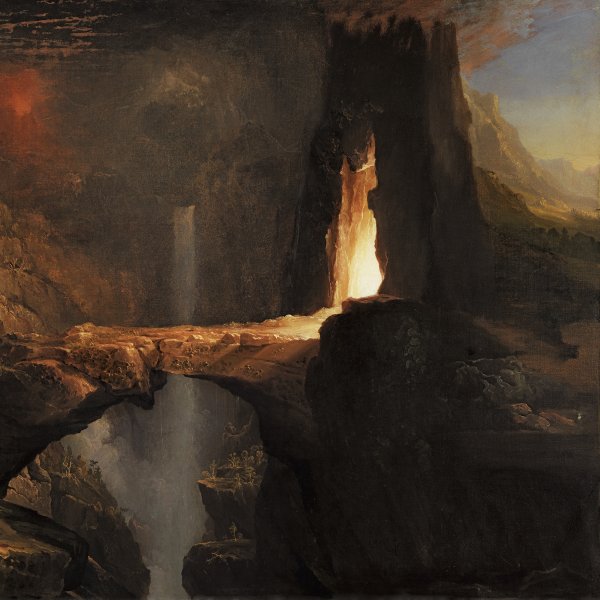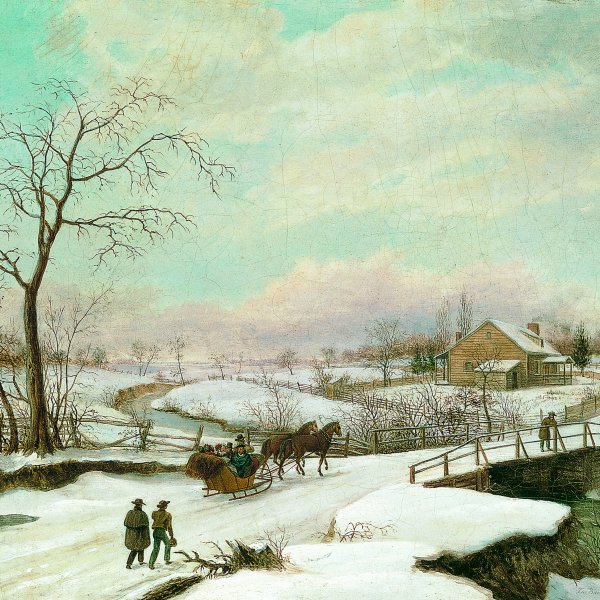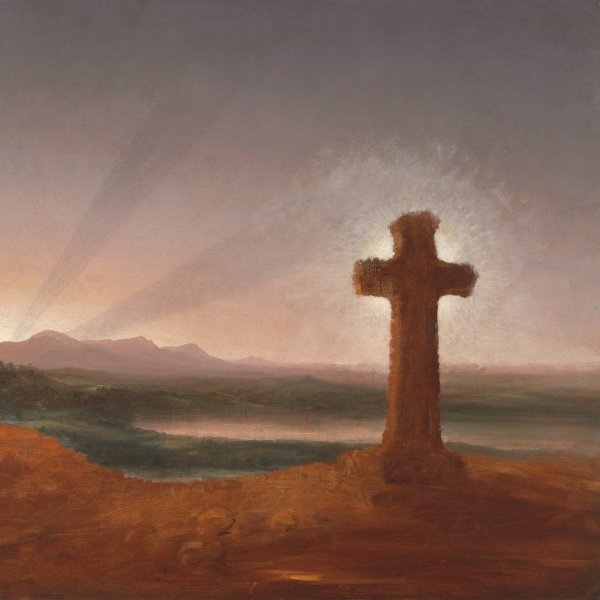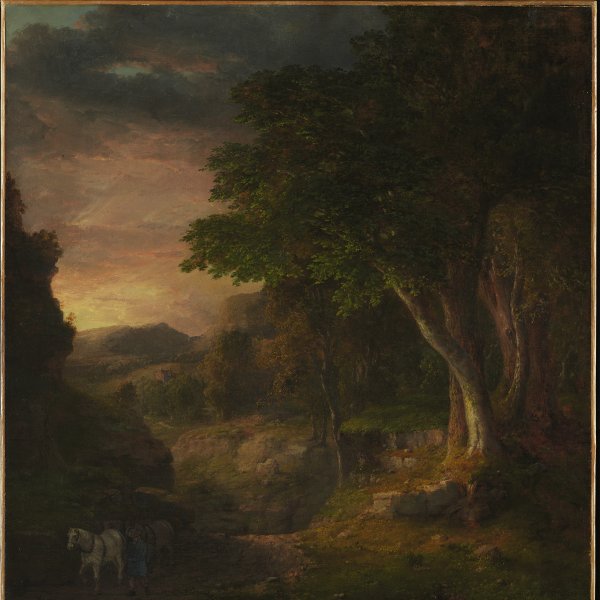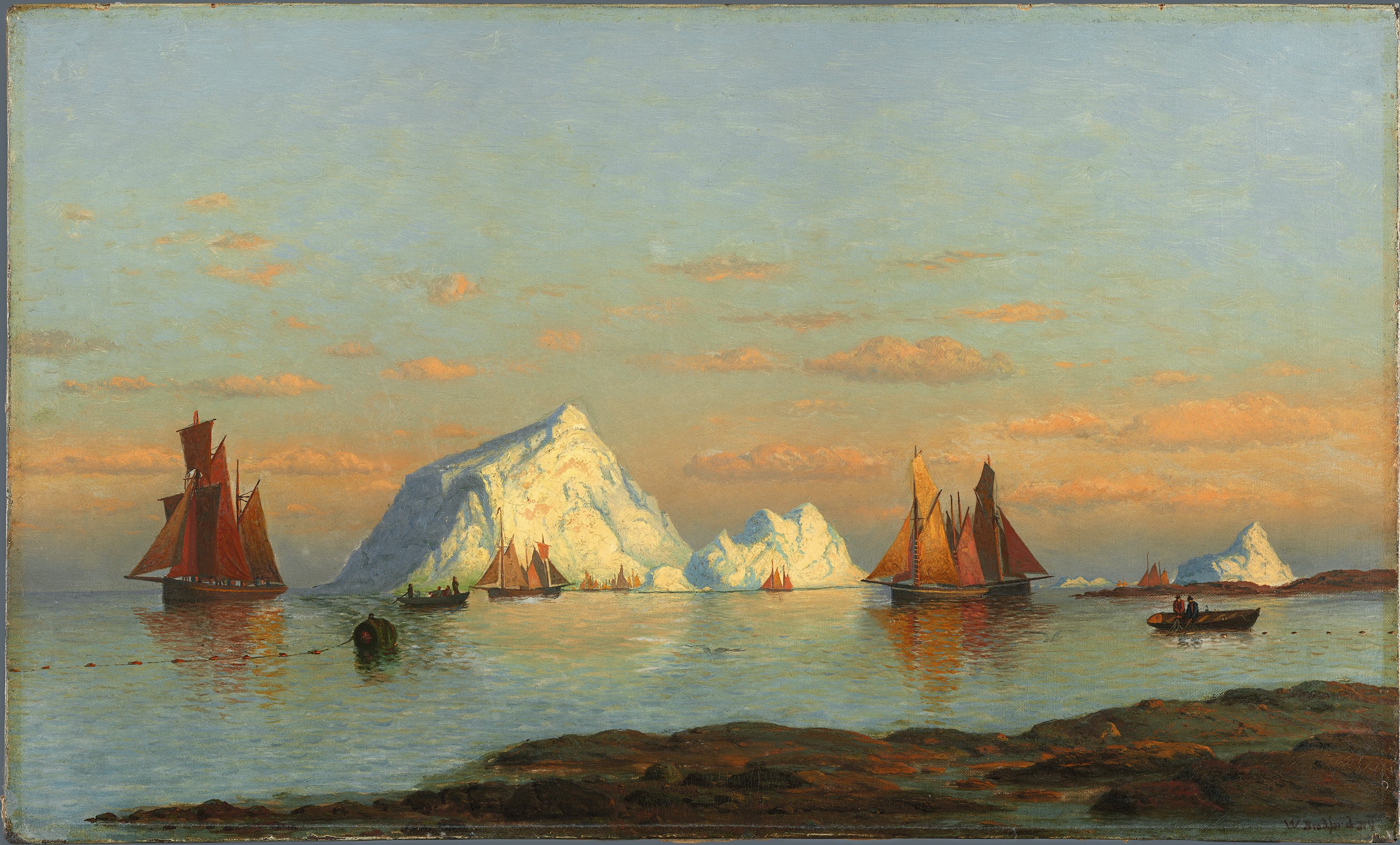Fishermen off the Coast of Labrador
Like many other mid-19th-century American artists, Bradford was attracted to the unexplored regions of the American continent. In 1861 he made his first trip to the Labrador Peninsula in Canada, following in the footsteps of the painter Frederic Edwin Church.
In 1874 and following a number of years in London, Bradford settled in New York where he produced paintings based on drawings and photographs taken in the Arctic. Fishermen on the Labrador Coast may date from this period due to its precise handling which is close to photography. Although lacking the immediacy of his earlier works, Bradford conveys all the beauty of the northern light reflected on the icebergs and the boats’ sails. This very unusual depiction of northern seas reflects a dual artistic and scientific interest on the part of the artist.
JAL
Bradford made his first voyage to the Arctic in the summer of 1861. "Although I had to depend on sails entirely", the artist wrote, "and to encounter many petty difficulties, the trip was so far satisfactory that I repeated it next season, and so on with but one exception through six succeeding years." In 1869, Bradford, along with the explorer Isaac I. Hayes, travelled to Greenland in a 375-ton whaling steamer, the Panther. Out of this journey came Bradford's magnificent limited-edition elephant folio, The Arctic Regions, illustrated with 136 tipped-in photographs. In his introduction, Bradford credits the illustrations to the photographers, John B. Dunmore and George B. Critcherson, but he certainly played a role in their creation and later in life allowed the credit for the photographs taken on his arctic journeys to be given entirely to himself.
On these voyages, the artist, clad in the sealskins of the Eskimo, filled his sketchbooks with the activity found along the shores of harbour inlets, portraying the fishing shacks and huts, docks and piers, buoys and lighthouses. Notations on these drawings reveal the synthetic nature of Bradford's final compositions, which were created from his drawings and photographs. "Good motive for corner of a view", he wrote on one drawing; "instead of ship put in her place a pile of rocks, " he suggested on another. Often a notation on a sketchbook drawing would remind the artist to consult the photograph taken of the same subject. Only a few drawings record icebergs seen on the open sea, subjects which were frequently photographed. Later in his life Bradford, who was among the first artists to utilize photographs, noted that the over seven hundred negatives he made during his trips had saved him "eight or ten voyages to the Arctic regions."
Although his sketches and photographs were in black and white, Bradford was acutely sensitive to the varying colours of the icebergs. He marvelled at the wonderful play of light and shadow upon them, and at one point in his The Arctic Regions, he remarked that he was able "to procure some of the finest studies of color" that he had ever seen. Throughout his text he recorded the shifting tints of the Arctic landscape: "[...] the scene could be compared to nothing but the quick-changing views of a kaleidoscope. Nor were the colours wanting to carry out this illusion. From dead white to glossy, glistening satin; from the deepest green to all the lightest shades; and from faint blue to deepest 'lapis lazuli;' and again, as some lofty berg passed between us and the sun, its crest would be bordered with an orange-coloured halo, in which sometimes prismatic shades appeared". At another time Bradford described the reflecting sunlight of the surface of an iceberg as "tinged with faint, flickering tongues of flames." In Fishermen off the Coast of Labrador, Bradford captured the effect of the evening sun upon the icebergs and the activity of the coastal villages he so fondly recorded in his sketchbooks.
Kenneth W. Maddox





